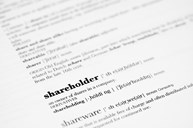Fringe Benefits Tax on Using Company Car
Cars are among the most frequently provided benefits to employees. Unfortunately, if the company car is available for the employee’s private use, that means that the employer will be liable for Fringe Benefits Tax on the taxable benefit provided, at a rate of 47%.
The Fringe Benefits Tax year runs from 1 April to 31 March, with lodgements and payments due on 21 May, or 25 June if lodging through a tax agent. Therefore, your business should now be in the thick of working out your Fringe Benefits Tax liability for the 2025 year!
A car fringe benefit arises when a car is held by an employer and is made available for the private use of an employee or an associate of an employee. A car is typically held by an employer when it is owned or leased by the employer (including under a bona fide novated lease arrangement).
There are several key principles to determine whether a car fringe benefit actually exists:
A car is defined as a motor-powered road vehicle (except a motorcycle or similar vehicle) designed to carry a load of less than one tonne and fewer than nine passengers. Therefore, the following (including four-wheel drive vehicles) are all types of cars:
a. the vehicle must have a GST-inclusive value less than the luxury car tax threshold at the time the vehicle was acquired ($91,387 for fuel efficient vehicles and $80,567 for other vehicles for 2024-25 and 2025-26 years),
b. the vehicle is not provided as part of a salary packaging arrangement and the employee cannot elect to receive additional remuneration in lieu of the use of the vehicle,
c. the employer has a policy in place that limits private use of the vehicle and obtains assurance from its employee that private use is limited to the rules outlined at d) and e), below,
d. the employee uses the vehicle to travel between their home and their place of work and any diversion adds no more than 2km to the length of the trip; and
e. for journeys undertaken for a wholly private purpose (other than travel between home and place of work), the employee does not use the vehicle to travel:
If your business has provided a Car Fringe Benefit, it is recommended that the following actions are undertaken:
This method is based on the costs of operating the car (including deemed costs for depreciation and interest) , multiplied by the percentage of private use of the company car (taken from a log book) in the FBT year, less any employee contributions.
Updated June 2025
The Fringe Benefits Tax year runs from 1 April to 31 March, with lodgements and payments due on 21 May, or 25 June if lodging through a tax agent. Therefore, your business should now be in the thick of working out your Fringe Benefits Tax liability for the 2025 year!
A car fringe benefit arises when a car is held by an employer and is made available for the private use of an employee or an associate of an employee. A car is typically held by an employer when it is owned or leased by the employer (including under a bona fide novated lease arrangement).
There are several key principles to determine whether a car fringe benefit actually exists:
Is a car provided?
A car is defined as a motor-powered road vehicle (except a motorcycle or similar vehicle) designed to carry a load of less than one tonne and fewer than nine passengers. Therefore, the following (including four-wheel drive vehicles) are all types of cars:
- Motor cars, station wagons, panel vans and utility trucks (excluding panel vans and utility trucks designed to carry a load of one tonne or more)
- All other goods-carrying vehicles designed to carry a load of less than one tonne
- All other passenger-carrying vehicles designed to carry fewer than nine people
Is the car available for private use?
The car must be available for private use. Private use includes situations where:
- The car is garaged at the business premises, but the employee is allowed to use it for private purposes
- The car is garaged at the employee’s home regardless of how it is used.
Do any exemptions apply?
The provision of a car benefit may be exempt if:- It is an eligible electric vehicle which cost less than the current threshold for luxury car tax ($91,387 in 2024-25 and 2025-26) or
- It is an exempt vehicle - this includes:
- all those vehicles which are not defined as cars (see above), as well as
- taxis, panel vans and goods vans
- utilities (designed to carry a load of less than one tonne) and other vehicles that are designed to carry a load of less than one tonne and that are not designed mainly to carry passengers.
a. the vehicle must have a GST-inclusive value less than the luxury car tax threshold at the time the vehicle was acquired ($91,387 for fuel efficient vehicles and $80,567 for other vehicles for 2024-25 and 2025-26 years),
b. the vehicle is not provided as part of a salary packaging arrangement and the employee cannot elect to receive additional remuneration in lieu of the use of the vehicle,
c. the employer has a policy in place that limits private use of the vehicle and obtains assurance from its employee that private use is limited to the rules outlined at d) and e), below,
d. the employee uses the vehicle to travel between their home and their place of work and any diversion adds no more than 2km to the length of the trip; and
e. for journeys undertaken for a wholly private purpose (other than travel between home and place of work), the employee does not use the vehicle to travel:
- More than 1,000km in total, and
- For a return journey that exceeds 200km.
Record-keeping requirements
If your business has provided a Car Fringe Benefit, it is recommended that the following actions are undertaken:
- The employee maintains a valid logbook recording their personal and business travel
- A record of the closing odometer reading of their vehicle is taken on 31 March of each year
Calculating Fringe Benefits Tax
The taxable value of a car fringe benefit can be calculated using either of the methods listed below. You can choose whichever method gives you the lowest taxable value so long as you have the appropriate records.Statutory formula method
A statutory rate of 20% applies to the company car’s base value, which is the cost price you (or a lessor) paid for the car:- excluding registration and stamp duty
- after any trade-in or cash payment by the employee
- plus the cost of any fitted non-business accessories, dealer delivery charges, and any GST and luxury car tax
Operating cost method
This method is based on the costs of operating the car (including deemed costs for depreciation and interest) , multiplied by the percentage of private use of the company car (taken from a log book) in the FBT year, less any employee contributions. Updated June 2025
Share with your friends
Related Articles
Prepare your business for the festive season by understanding the tax implications of Christmas p...
4 min read
Learn more about tax rules, tax deductions and other key points governing cost of facilities, cap...
3 min read
An area that often gets small and medium sized private companies into hot water is the blurred li...
8 min read
New Requirements for Company Directors Under Federal Government’s Modernising Business Registers Pro
All company directors now need to verify their identity, following the introduction of new requir...
5 min read




.png?width=55&height=48&ext=.png)
-1.svg)

